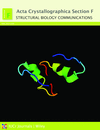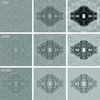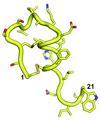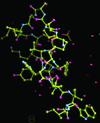issue contents
January 2019 issue
Including invited contributions on state-of-the-art cryo-electron microscopy

Cover illustration: The human peptide hormone endothelin 1 is important as a vasoconstrictor and is thus a key regulator of blood pressure. The structure of endothelin 1in the unbound state has been determined using X-ray diffraction data that were collected in 1992 [McPherson & Larson (2019), Acta Cryst. F75, 47-53]. This structure shows the value of archiving raw data and reporting the experimental details so that methods can be improved and more difficult structures can be determined in the future.
editorial

cryo-electron microscopy
 access
access

 journal menu
journal menu





















![[publBio]](/logos/publbio.gif)





